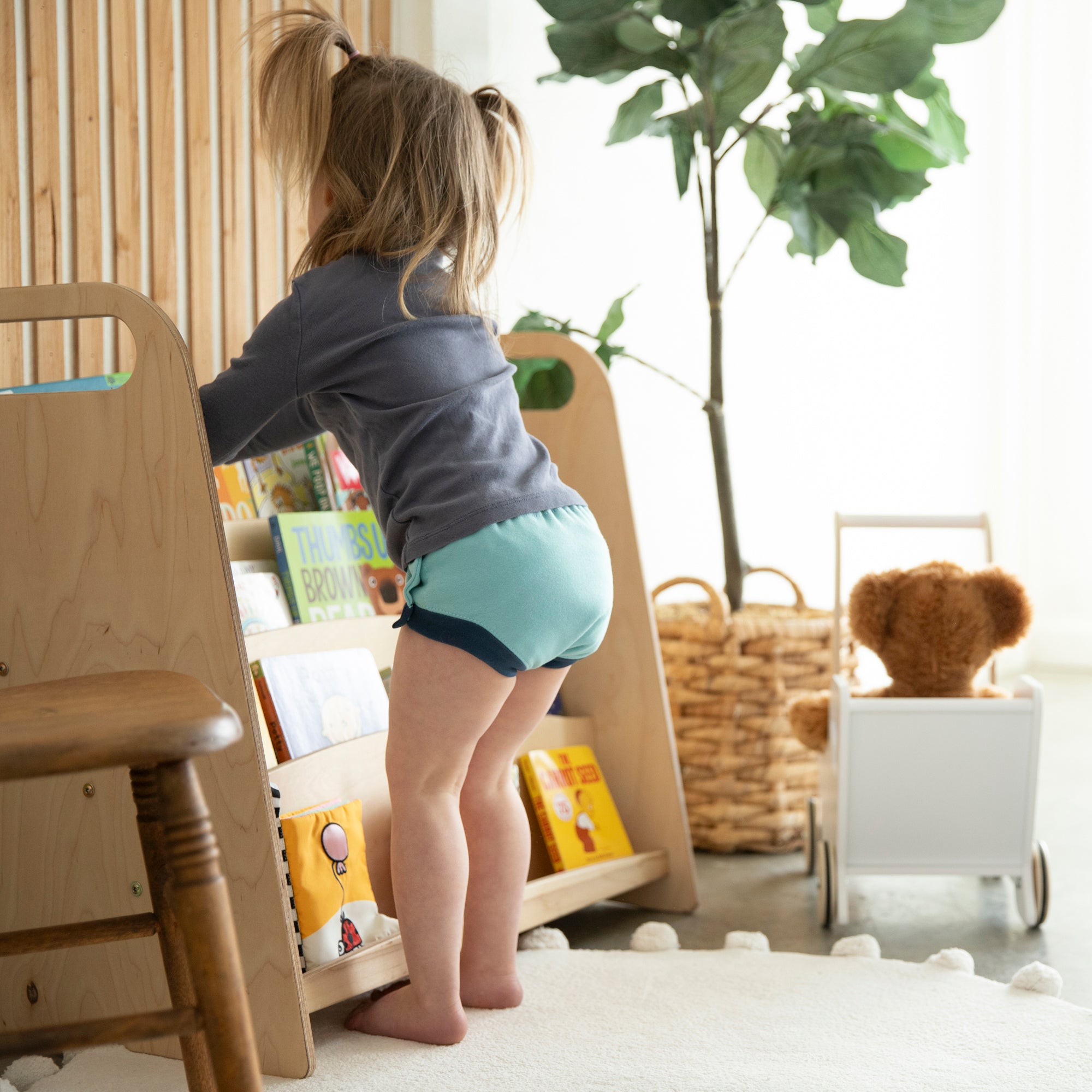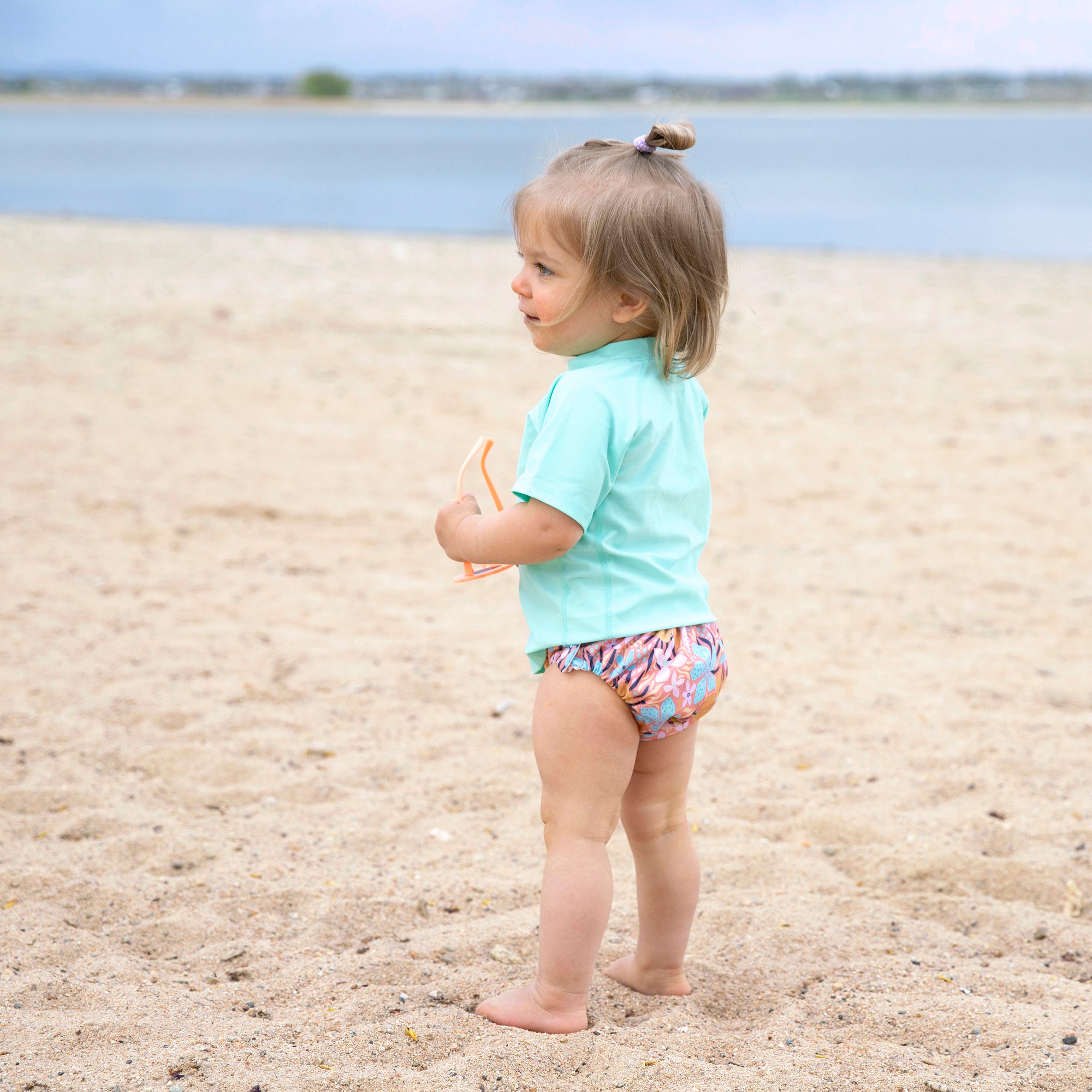High Efficiency, or HE machines, can be top loading or front loading washing machines. Top-loading models look like standard machines from the outside, but like their front-loading cousin, they use different
 types of washing action to get clothes clean using less water and energy. Front-loading models are similar to machines used in Laundromats, which lift and drop clothing into the water instead of rubbing clothes around an agitator. Many HE machines have sensors to monitor incoming water temperature and the weight of the load. They also rinse clothes with repeated high-pressure spraying instead of soaking them in a full tub of water. Both top-loading and front-loading ENERGY STAR certified washers save resources such as gas, electricity, and water. They utilize faster spin cycles to extract more water out of the laundry, reducing dryer time and energy use. HE Facts Water Traditional machines generally require enough water to cover all the clothes in the drum, while a high efficiency washer needs only about a 20-66% of that amount. Wash Time Wash cycle times are generally longer with a high efficiency washing machine, but dryer times are decreased.
types of washing action to get clothes clean using less water and energy. Front-loading models are similar to machines used in Laundromats, which lift and drop clothing into the water instead of rubbing clothes around an agitator. Many HE machines have sensors to monitor incoming water temperature and the weight of the load. They also rinse clothes with repeated high-pressure spraying instead of soaking them in a full tub of water. Both top-loading and front-loading ENERGY STAR certified washers save resources such as gas, electricity, and water. They utilize faster spin cycles to extract more water out of the laundry, reducing dryer time and energy use. HE Facts Water Traditional machines generally require enough water to cover all the clothes in the drum, while a high efficiency washer needs only about a 20-66% of that amount. Wash Time Wash cycle times are generally longer with a high efficiency washing machine, but dryer times are decreased.

Cleaning the machine
Since water use is low, there's a tendency for soap and soil residue to build. This requires you to run a monthly cleaning cycle. Laundry Detergent High efficiency machines cannot use the same detergent you buy for a traditional machine. High efficiency detergents do the same great job of cleaning but are formulated to work better in a low water environment. Efficiency Since there's either no agitator or a smaller agitator in high efficiency washing machines, you can also generally do larger, and hence fewer, loads than in traditional machines. Energy Star Washers with the ENERGY STAR rating use about 35 percent less water and about 20 percent less energy than standard washing machines (15 gallons of water per load, compared to the 23 gallons). Benefits of HE machines- Performance: Great at getting clothing clean. HE machines usually have more customized settings which can provide for better cleaning. Many newer models of HE washers have sensors, enabling the machines to detect the weight of a load and the type of fabric, so they can run at optimal temperature and water levels.
- Less Wear and Tear: Unlike washers with agitators, which actually scrub the soil out of fabric, high-efficiency models toss and tumble through a stream of water to clean the laundry.
- Greater Capacity: Due to the removal of the agitator, front-loading washers save space inside allowing for larger loads. Front load machines can also be stacked with a dryer to save space.
- Resource Preservation: Energy Star-rated machines are required to use 30 percent less energy than traditional models, and most high-efficiency washers use 20-66 percent less water.
- Shorter Dry Times: Although the wash cycle is longer, the spin cycle removes more water from fabric. This may not be an issue for those line drying in arid climates, but can help for those using the dryer or with more humid climates.
- Cost Savings: Although HE machines can cost quite a bit more upfront, they can save money on resources such as energy and water. Keep in mind if using the sanitize cycle on clothing or linens, that this super-hot cycle increases energy use significantly.
- Initial Cost and Maintenance Costs: HE machines can come with a hefty price tag. The machines will also have higher maintenance costs, due to the high tech features and cost of specialized parts.
- Noise: The spin cycle on HE machines may be a bit noisy. Placing a thick mat under the machine may help.
- Mold and Mildew on front loaders: Due to the rubber seal utilized to keep the water in, mold and mildew can grow around the inside seal and in the washer. Cleaning the machine on a routine basis should help, as well as keeping the door open in between uses (make sure small children do not have access to the machine when the door is open). Also make sure to remove laundry promptly after the wash cycle is finished.
- Difficulty Cleaning Cloth Diapers: Due to the amount and nature of the soil in cloth diapers, HE machines may not clean cloth diapers thoroughly. This can depend on the amount of water that the machine uses, wash routine, and the make and model of machine.





We are on our second HE Front Load Washer and LOVE them. The first we sold with our home because we were moving to another state and the cost to move it was too high. The machines do take much longer to wash clothes. However, I have never had an issue with clothes not getting clean.
Our first machine was a Kenmore (2004?). It did a great job. Our friends brought over their two sleeping bags and washed them while we had dinner. The sleeping bags had never been washed and were very dirty from years of use. 3 hours later, the sleeping bags finally stopped washing. The machine adjusts the wash time to make sure the clothes are clean. Annoying, but no need to go to a laundry mat. And yes, the sleeping bags came out very clean.
Now the diaper test. Our current machine is a Samsung (Kenmore ratings dropped). We used exclusively cloth diapers. This machine rocked! Never had a load not come clean – even dirty diapers. The cycles are longer 30 – 100 minutes depending on what we are washing and the settings chosen. It isn’t a problem for us. If we really need a quick load, we use the quick wash cycle (clothes still get clean but we haven’t tested it with anything really dirty). – - One advantage of the longer cycles is the longer and faster spin cycles. We use extended spin which adds an average of 4-6 minutes to the spin cycle. This allows the washer to remove more water – without the use of heat. It saves drying time, energy costs, and is better for the clothes (less shrinking).
For the diapers, we used a sprayer connected to the toilet to remove any solid waste, then put them in a wet bag. We washed diapers every other day. For detergent, we used Rockin Green or Charlie’s Soap. Rockin Green was more aggressive but also more expensive. We used the Heavy Duty cycle with Hot water wash – cold rinse, second rinse, and extended spin (on extra high). Because I ran the cycle overnight using the delayed start timer, I wasn’t bothered by the 2 hour cycle. The diapers came clean.
To strip the diapers, we used the Dawn soap in a bucket with a scoop of Rockin Green and hot water from the tap. After it sit for a few hours I simply dumped the diapers and water into the washer. Then I ran a Sanitize cycle with Steam clean, and Rockin Green detergent. Great results. Just make sure you don’t have any elastic or covers because the extra hot temps are not good for them.
I can’t speak for those who had a bad experience with HE machines. Maybe the machines they got were bad. We spent good money on ours but they are worth it, and we love them.
Bookmarking this. Great information on HE machines. I haven’t had any issues yet but will be referring back to this post. Excellent.
I just got a HE LG top loader, and when on cold wash, less than 8 lbs is recommended. The water level only rises to 1/4 of the wash tub, and 1/2 of the tiny load is still above the water line. Through the glass lid, I watched, and the top layer of clothes never made it to the bottom of the cycle. When in cold wash mode, 80 minutes is also added to the already long wash cycle, putting it at well over an hour and a half for a tiny load. I checked with the manufacturer, held up my phone for diagnosis, and all is fine with the washer.
I am sending it back and searching for an old model! I do my laundry on cold, and can’t live with 1/4 load size and 1 1/2 hour loads, with no submersion of 1/2 of the clothes in the cycle!!! I am an energy conscious person who chooses energy efficiency all the time, but in this case, I am making an exception, and going for an older model with submersion of clothes!
My HE is ruining my clothes and towels by wearing them out. My towels and shirts are all worn out around the edges. I can’t find out why I can’t find others with the same issue. I just want my old washer back. The questionable cleaning is one thing,but the fact that it is ruining my stuff is really bothering me. Why should I have to wash everything by hand?
I just blindly purchased a Maytag top loader “he” machine, only because my basic Frigidaire’s transmission went out after 12 years. I had been wanting a nice new fancy machine, but I had absolutely no idea what an “he” was about. I anxiously awaited its delivery, and at once began to read the manual and operate the machine with much dismay. Once I saw how little water this machine uses, I couldn’t believe how manufacturers have sold this bill of goods to consumers to try and convince us that less water is cleaning our clothes. Not to mention, the rediculous notion that the spin cycle is so powerful, that you will find dry spots on the clothes, reducing drying time. Those dry spots are from lack of water. Lol! I really believe this is all a political scheme for conservationist regarding the planets well being — so we have to be sold a bill of goods , that these machines are more beneficial and effect than what we have always been using. Anything in the name of change, progress, and the technological era. It’s all hogwash!
Therefore, I am now resigned to only using the “bulky/sheet” setting, since that is the only setting on my new “he” machine, that will fill up the basin completely with water.
You're viewing 16-20 of 41 comments